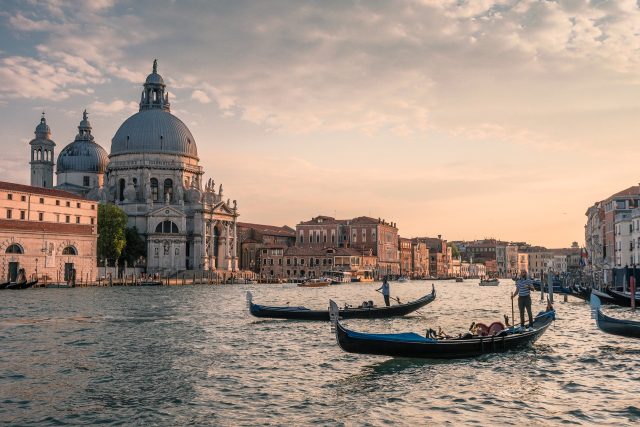
The Third Highest Tide in History Did Not Damage the Historic Center Thanks to the Bulkheads
In 1966 the worst tide in the history of the lagoon city was recorded, with the water level in the historic center reaching a record height of 194 centimeters, causing the worst disaster ever faced by the Venetians. In 2019 the water reached 187 centimeters in November, causing hundreds of millions of euros in damage by flooding the entire centre. In recent days, the joint action of the sirocco and the bora, which have reached a maximum speed of 113 kilometers per hour, has caused waves up to 3 meters high which, according to experts, would have caused the flooding of the historic center of Venice with a higher water level, probably, than that of the 2019 disaster but, the bulkheads that came into operation as required by the MOSE prevention protocol, avoided the worst.
In the late morning of last November 22nd, the high tide reached a record level of 204 centimeters at the Malamocco inlet, 191 at the Chioggia inlet and 187 at the Lido inlet, thus becoming the third highest tide in the history of Venice and making fear the worst for the historic center. As expected, however, the 78 sluice gates of the sophisticated protection system were lifted and thus isolated the lagoon from the sea, keeping the water level in the city area around 65 centimeters, low enough to keep Piazza San Marco at dry. Without the providential intervention of MOSE, according to estimates, Piazza San Marco would have been submerged under a meter of water, with all the logical inconveniences.
As per practice, the bulkheads of the MOSE were raised gradually and starting with those of the Lido, so as to allow all boats to use the inlets of Malamocco and Chioggia to find shelter. Since 2 o’clock in the night, on the other hand, all the bulkheads came into operation to remain active for the next 20 hours. The mayor of Venice Luigi Brugnaro took advantage of the situation to remind all those who declared themselves against the construction of the MOSE, how valid and useful the project turned out to be and how much damage the artificial dams saved the Venetians.
Many detractors of the project, linked to the protective bulkheads of the lagoon city, were waiting for a test in extreme situations to assess any critical issues in the operations and, the one of the past few days, can be considered, to all intents, the ideal test for defining the fundamental MOSE for the preservation of the historic center of Venice. Over time, the lifting of barriers has been perfected and now takes place in a shorter time and more effectively, thanks also to the skill of the operators involved in the design and maintenance of the structure.
In addition to astronomical and meteorological factors, the historical phenomenon of high water in Venice is also influenced by the lowering of the ground level, which, in the city area, dropped by more than 12 centimetres between 1950 and 1970, a drop that occurred mainly due to the depletion of the water table. Therefore, in order to prevent symbolic places in Venice, such as St. Mark’s Square, which is visited by thousands of tourists every day, from being submerged by water, in addition to the MOSE bulkheads, high-resistance glass barriers have recently been installed. These new structures prevent the deterioration of the church pavement and allow citizens and tourists to cross the square without getting wet as in the past.
Alessandro Fiorentino



 Subscribe
Subscribe